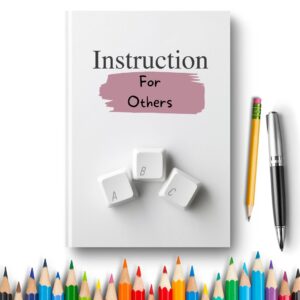Let me start by sharing one of my memorable epic fails of resolutions past. Many years ago I’d resolved to get in shape by starting the new year off with a gym membership. I decided the expensive monthly fee and 6-month contract was just what I needed to get myself to follow through. I was so excited to whip myself into a lighter, leaner me that I pushed myself through two advanced exercise classes on the very first day! The following morning I was so sore I could barely get out of bed. The next morning was even worse. The physical pain lasted almost a week, but the emotional pain lasted much longer and hurt worse. I was furious at myself and intent on getting back in that gym. It’s not surprising that the more I bullied and berated myself, the worse I felt about myself and the less motivated I was to go, which only further intensified the self-attack. In effect, I created a no-win for myself that left me confused, frustrated and self-defeated.
Maybe you too know what it’s like to resolve to change something; to have a vision, make a plan and go all in with gusto, only to crash early on and decide it’s better to leave your goal in the dust than face your own self-loathing? If so, you are not alone. Here are 5 secrets to help keep your 2020 resolutions: 1.) Find Your Want 2.) Know Your Why 3.) Don’t Wait For Motivation 4.) Choose Discomfort 5.) Failing Forward
Secret #1: Find Your Want
Race car drivers learn early on to keep their vision focused on where they want to go as they navigate around a track. If they look at the wall they want to avoid, they’ll head straight for it.
Our brain has a default setting that automatically pulls our attention toward the very thing we don’t want. It takes effort and practice to override this tendency, but it’s worth it. Using our own resistance as a spring board for change is like trying to jump with weights in our shoes – we can do it but it it’s a lot harder, requires more effort than necessary and can leave you feeling defeated early on.
Tip: Whenever you notice yourself thinking about what you don’t want to keep doing, interrupt your thought stream to deliberately focus on what you want to do instead.
Secret #2: Know Your Why
“The person who has a clear, compelling, and white-hot burning why will always defeat even the best of the best at doing the how.”
― Darren Hardy, The Compound Effect
Before taking action on your resolution, get clear on your reasons. Use these prompts to guide this process:
- Why are you wanting to make this change?
- What do you think you’ll think and feel about yourself once you’ve made this change?
- What do you believe will be different if you stick with your resolution?
- What do you think you’ll have once you accomplish your goal that you don’t believe you have now?
Tip: Your reason should be clear, specific and activate emotion in you. If it’s is too vague (ie.,“I want to feel better”) it won’t be compelling enough to sustain you in the long run. Once you have a compelling reason, write it down and keep it handy & reference it frequently to prepare for challenging moments.
Secret #3: Don’t Wait For Motivation
*People who procrastinate often have the idea that motivation comes before action. They tell themselves, “I don’t feel like it now, so I’ll wait until I’m in the mood.” But the motivation doesn’t come, and they end up doing nothing. In contrast, people who make progress get started whether they feel like it or not because they understand that action comes first and motivation comes later. Do you put things off because you don’t feel in the mood?
__ Not At All ___ A Little ___ Somewhat ___ A Lot ___ Completely
This question is taken directly from my Intake Form*. We often depend on motivation and inspiration to keep us taking action toward our goals, but this is rarely an effective strategy because these emotions are often unpredictable, unreliable and fleeting.
Tip: Try using emotions like determination, commitment, perseverance or grit to maintain consistent action toward your goals.
Secret #4: Choose Discomfort
You’re probably thinking, “Who in the world would choose discomfort?!” Well, if you have any intention to keep your new year’s resolution, the answer would be YOU!
Let me explain. Our human brains are designed to keep us safe; to minimize effort and maximize comfort. The brain associates familiarity with safety and the unknown with threat or danger. For this reason, your brain interprets change as a bad idea, even if the change is in our best interest and something we want to do. But in order to grow and evolve, we have to choose to do difficult things.
It can be confusing and even surprising to feel so much discomfort when we attempt to make even minor changes in our lives. Knowing intellectually how much want to make these changes lulls us into a false expectation that it shouldn’t be hard or uncomfortable. Understanding and anticipating the resistance that inevitably emerges can dial down self-judgment and create space for self-compassion.
Tip: Expect to be uncomfortable when making any worthy change. Choosing it on purpose will give you authority over moments of discomfort instead of feeling ruled by them.
Secret #5: *Failing Forward
“The easier it is to quit, the more proud you’ll be of yourself when you don’t.” – Brooke Castillo
We grow up being taught that failure is bad and to be avoided at all costs. Many of my clients have gotten good at avoiding risk of failure, but then life becomes narrow and stale, devoid of growth or expansion. What if failure is the very thing that get us closer to our goals? What if failure is a requirement for success? What if failure is actually a sign of progression, not regression?
You get to decide what failure means to you. Take some time to get clear on how you want to redefine failure for yourself before you start taking action on your resolution.
Tip: Try to see failure as just data; new information you have now that you didn’t have before. Keep a log of worthy fails (ones where you took an action that didn’t result in the outcome you wanted), and for each one write the answer to these 3 questions:
- What worked?
- What didn’t work?
- What do I want to do differently?



